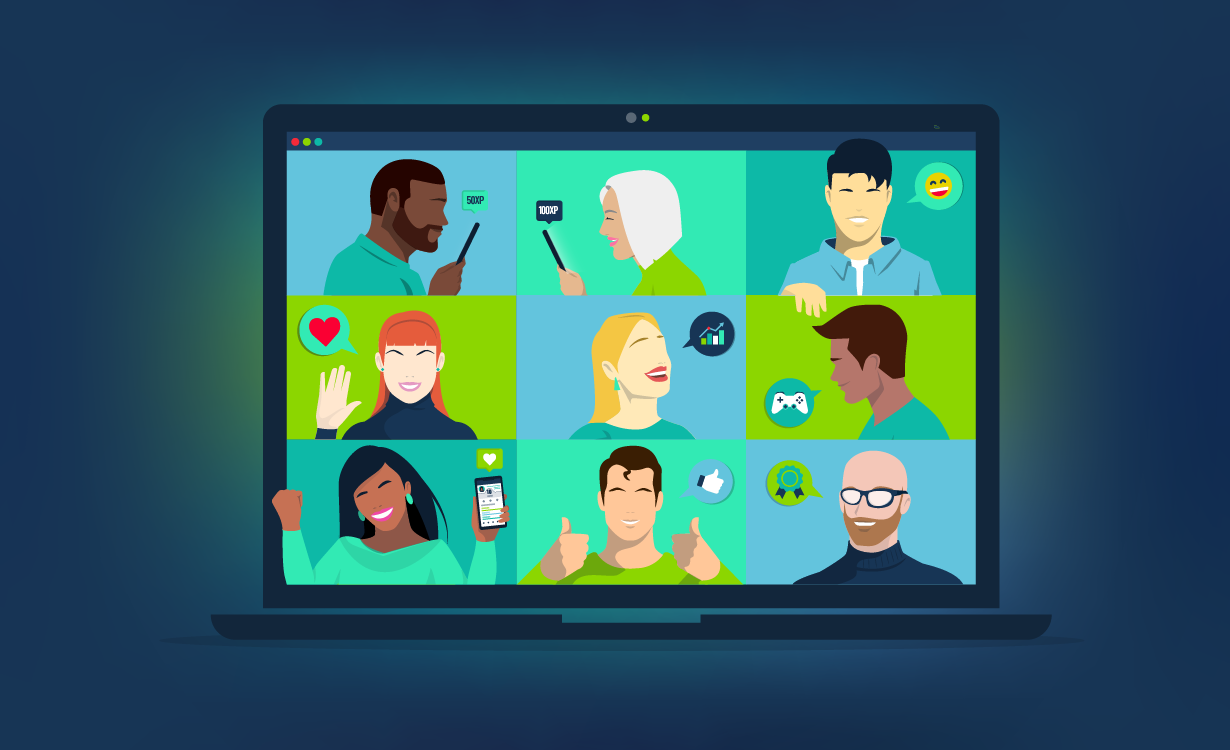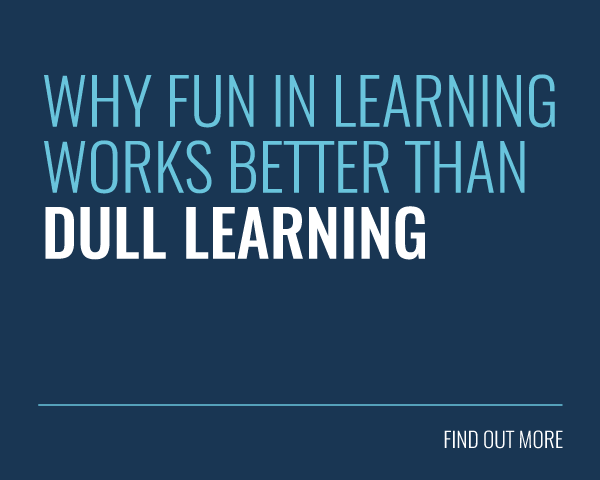
We could be in the midst of a cultural revolution. Just like the continuing ripples of space exploration, or the breakup of the Soviet Union, or the lasting impact of The Beatles; augmented reality could change everything as we know it, including learning and development.
How? The possibilities of AR are endless. The military is applying AR during combat training to help sharpen response times and rational thinking under extreme pressure. The medical industry is applying AR in surgery training for similar reasons. Even office-situated companies are in on the action, employing AR to enhance soft skills.
These are just a few examples of the boundless potential this (relatively) new technology has to offer. So why is AR the new hero of learning? Why is it so important to L&D? And why do L&D experts want to make it an everyday reality?
Augmented Reality: A Brief History
Before we detail why augmented reality is so awesome, we’re going to travel back in time and discover how it came to be. It has seemingly emerged out of nowhere over the past few years like some kind of mysterious alien landing, but that’s not actually the case…
1968: Computer scientist Ivan Sutherland created The Sword of Damocles, said to be the world’s first head-mounted display and use of AR and VR.
1990: The phrase augmented reality was conceived by Boeing researcher Tom Caudell.
1998: NASA tests the use of AR in navigation by employing it for their X-38 spacecraft.
2000: AR Quake is released! AR Quake was the first mobile augmented reality video game. The protagonist plays ‘Ranger,’ who was sent through a portal to stop a mysterious cryptonym named Quake (as you are!).
2009: Long-running American men’s lifestyle magazine Esquire published the first ever AR embedded front cover. Readers scanned the cover with their mobiles and suddenly Robert Downey Jnr was chatting away and promoting his latest film, Sherlock Holmes (and what a film!).
2012: The first ever cloud-based AR app was released by Blippar.
2016: Nintendo launches Pokémon Go! Suddenly AR is no longer a fringe technology; it’s now a mainstream experience enjoyed by millions worldwide.
At its early peak in 2016, Pokémon Go’s daily users averaged at 45 million worldwide per day. Collecting Pokémon in a muddy field, in your bathroom or even on the wings of a plane became a regular occurrence for many players.
Why is Augmented Reality So Crucial to Learning and Development?
What made, and continues to make, Pokémon Go such a global phenomenon? Is it the use of AR in a new, exciting way? Or is it the social aspect? Perhaps it is the simplicity? Is it the neurological rewards you get when you catch a rare Pokémon, such as a Mew?
The truth is, it’s all of those things. But why would this relate to L&D? Here are seven reasons:
1. It’s Mobile-Happy

As our timeline states, the first ever example of augmented reality was developed in 1968 by Ivan Sutherland. It was called The Sword of Damocles, and it was a head-mounted display which demonstrated a stone-age version of augmented reality. Even back then, it was obvious that if AR was going to work, it would need to be mobile.
The growth of AR has come at just the right time, as mobile’s are, well, quite a big deal! The average person checks their phones 52 times a day. On top of this, nomophobia is a new phobia – the fear of being without your mobile phone. Studies show that 66% of all smartphone users suffer from nomophobia. Suffice to say, smartphones have become an extension of our very selves.
There are over 500,000 educational apps worldwide, proving that this is how people want to learn. Add into the mix augmented reality, and we have an explosive recipe for learner engagement!
2. It Taps into Gamification
Gamification is the process of applying game mechanics to non-gaming environments. AR has always been synonymous with gaming. From AR Quake, to Harry Potter Wizards Unite, to Pokémon Go; there are now plenty of popular AR games on the market.
Gamified AR is also being employed to motivate learning. For example, Arloon Plants teaches you all about horticulture, but also adds games into the mix to keep the learner engaged and determined to learn more and more.
3. It Minimises Learning Risks
Training carries a vast amount of risks as the trainee is not yet qualified. Similarly, some of the training environments are dangerous. Luckily, augmented reality can help you to minimise risks by providing a safe learning environments.
AR in medical training is becoming the norm. For example, Blippar is working with a pharmaceutical company to train doctors and nurses on how treatments can progress on different patients.
Organisations in other risky industries also use AR to train their employees. These industries include electronics, aviation, firefighting and heavy machine lifting jobs such as forklift operating.
4. It Promotes Experience-Based Learning (I.e. It’s not dull!)
‘I hear and I forget, I see and I remember, I do and I understand,’ said that talented philosopher, Confucius. The ancient beardy one made a good point which still stands today.
Using AR in training exposes trainees to real-life situations, making it much more exciting than books, and much more memorable too (more about that later).
Research shows that narrative-based learning releases Oxytocin; the same brain chemical which is released when you’re in lurve! This is why incorporating narrative during training is so engaging.
5. It Drives New Levels of Visual Attention in the Brain
According to Zapper, augmented reality drives high levels of visual attention in the brain, nearly double that of non-AR related tasks. Gaining attention via visuals is something that brands spend a lot of money on. It’s big business. The most expensive ad campaign of all time was from Chanel. It cost $33 million dollars to produce. Learning and Development is not dissimilar in its ambitions, as gaining the attention of learners is just as crucial as gaining that of customers.
Zapper’s findings also showed that AR drove higher levels of attention than any other medium, including books, PDFs, videos and much more. This makes AR the perfect medium through which to engage your learners with their training!

6. It Sends a ‘Surprise’ Response to the Brain
Luckily, we’re living in an age where people are still having amazing reactions to experiencing augmented reality and virtual reality headsets. From pure shock, to ecstatic squeals, the reactions are reminiscent of that giddy feeling children get on Christmas morning!
The truth is, people are enjoying a feeling similar to that of surprise when using AR technology. In a neuroscientific sense, users experienced lower levels of wanting to move away from the stimulus when participating in an AR task.
7. It’s Much More Memorable
It probably comes as no surprise, but memory is rather crucial to training. The Forgetting Curve tells us that we forget 90% of what we learn within the first month. We therefore need to find ways to battle this. AR is a fantastic tool in the fight against The Forgetting Curve.
Research states that memory encoding is 70% higher in AR related tasks, in comparison to non AR related tasks. This means that when you use augmented reality, the majority of your learning experience is transferred to your long-term memory. AR, therefore, saves money on pricy retraining.
Final Words
Augmented reality has officially joined the fight against dull online learning, and it’s made quite the impact. Just like when The Avengers team up, together, we’re giving dullness a powerful kick!
From its life-saving use in medical training to boosting soft skills; the possibilities really are mind-blowing. Additionally, it saves on pricey retraining costs and puts safety first, rather than learning in risky environments.
On top of this, it adds a gamified slant to things such as onboarding. The reality is, learning is no longer dull. Instead, it’s augmented!
Want to find out more about the importance of gamification in learning? Download our free fact-filled guide to why gamification works, right here!








